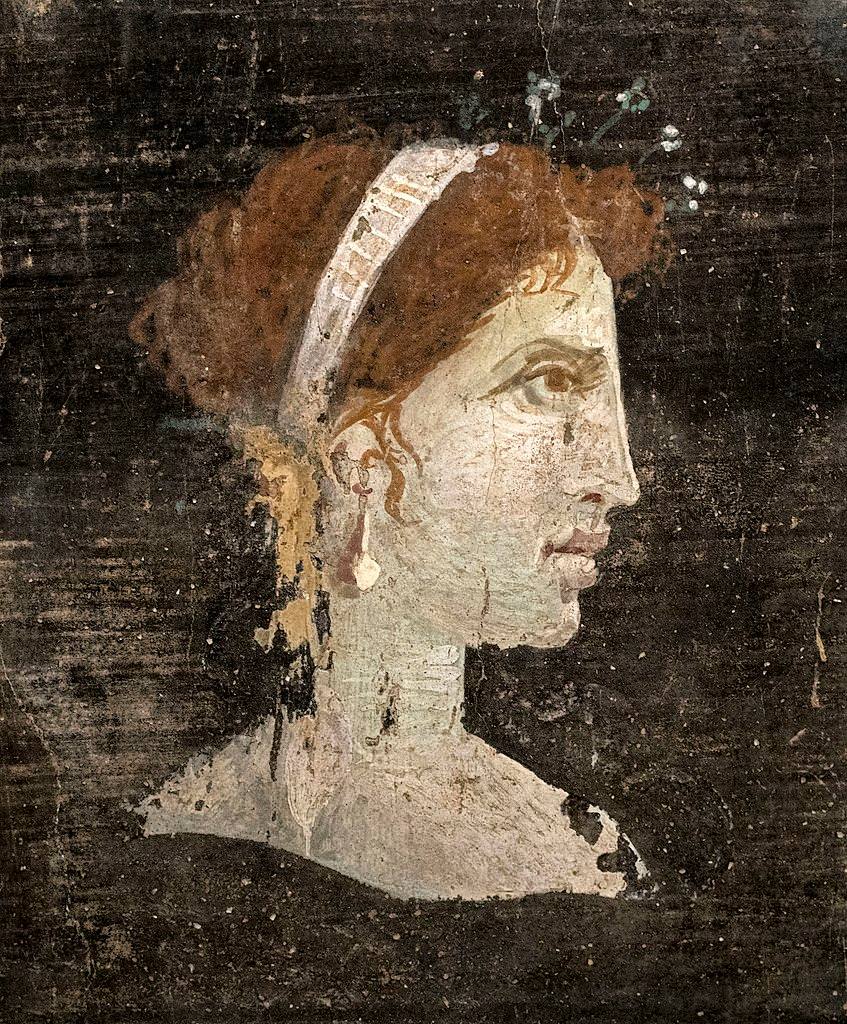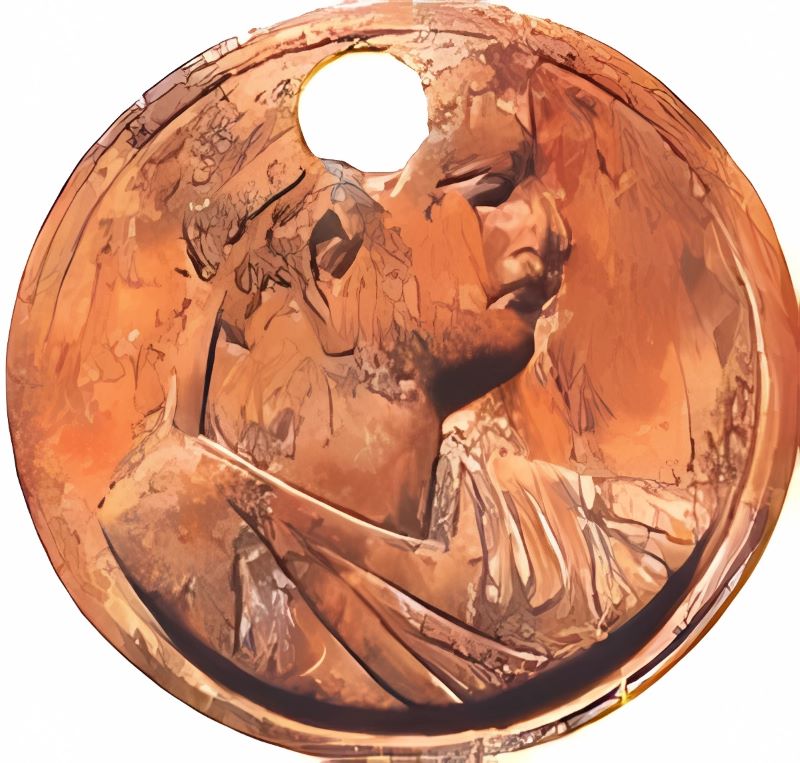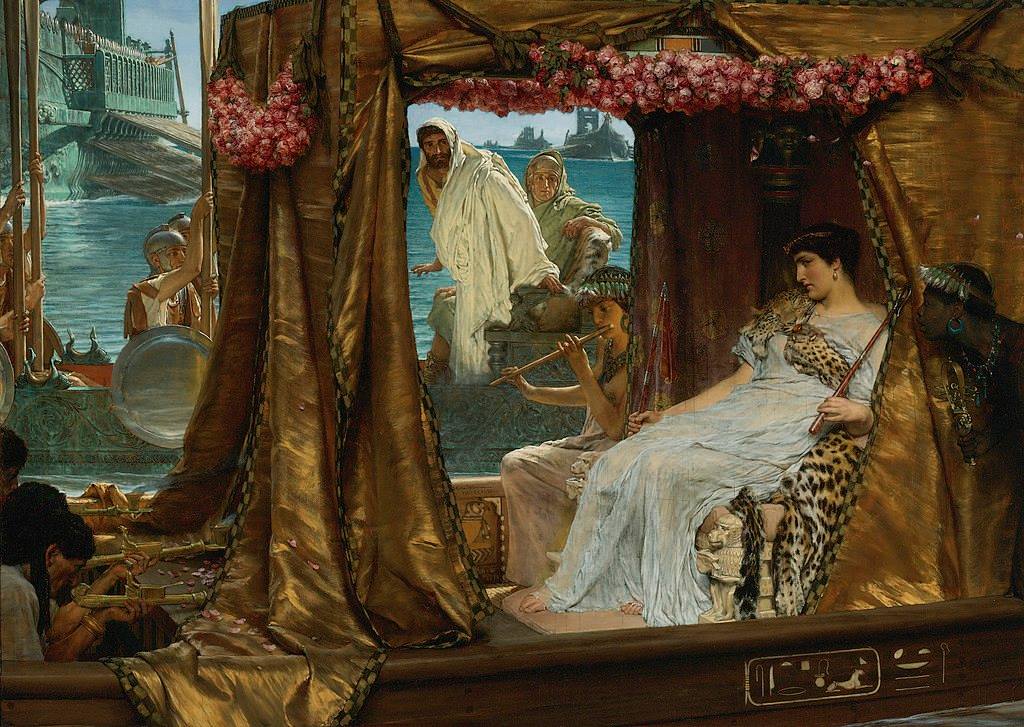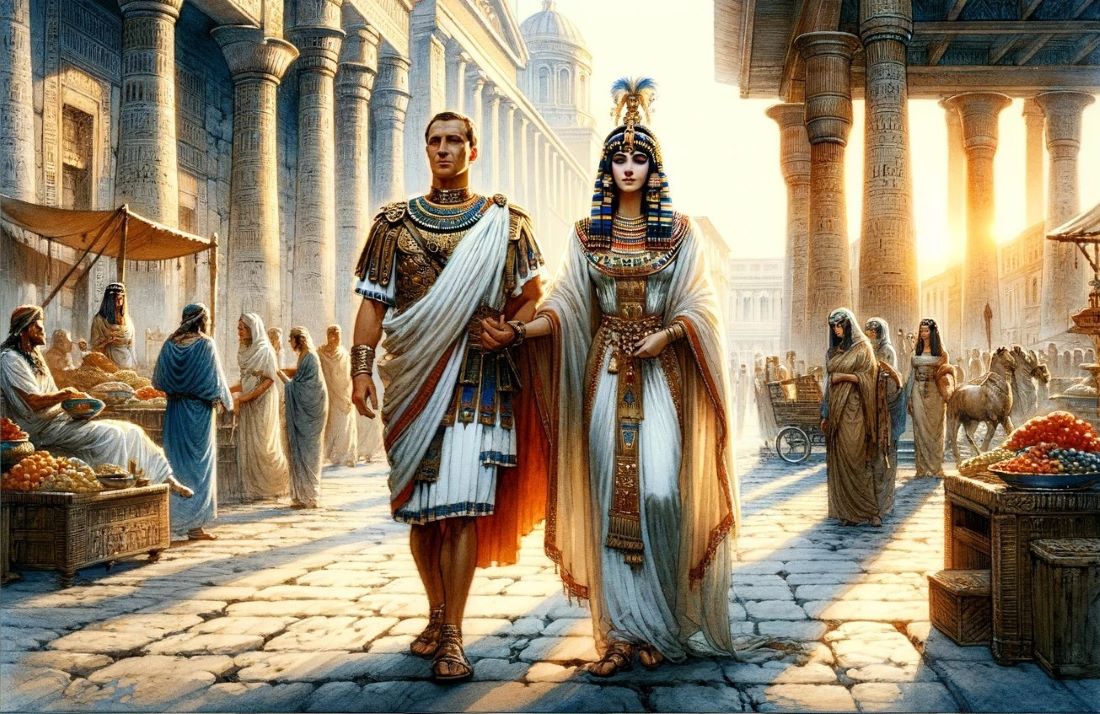Did Cleopatra marry her brother, and what was the nature of the relationship between her and her siblings? This inquiry arises when exploring the history of this enigmatic figure. Indeed, Cleopatra was married not just to one, but to two of her brothers. In the forthcoming analysis, we will delve into Cleopatra’s formal unions as well as explore the dynamics of relationships that defy conventional characterization.
Cleopatra and Ptolemy XIII
The marriage between Cleopatra and her younger brother Ptolemy XIII exemplifies the complex interplay of political ambitions and cultural traditions in ancient Egypt. Despite their Macedonian Greek origins, members of the Ptolemaic dynasty fully embraced Egyptian customs, including the practice of royal siblings marrying to consolidate power and ensure the dynasty’s continuity. This alliance between Cleopatra and Ptolemy XIII was strategic, aiming to strengthen Cleopatra’s claim to the throne amidst Egypt’s intricate and often violent political arena. However, this union was far from harmonious; it was underscored by intense rivalry and conflict, rooted not in familial affection but in a relentless quest for power.

The friction between Cleopatra and Ptolemy XIII eventually led to open conflict, culminating in a dramatic power struggle that reshaped the course of Egyptian history. Cleopatra, ousted from power by Ptolemy’s advisers, allied herself with Julius Caesar, the Roman general and statesman, leveraging his support to regain her throne. The infamous siege of Alexandria ensued, a pivotal moment in which Cleopatra’s strategic acumen and her alliance with Caesar proved decisive. Ptolemy XIII perished in the aftermath, reportedly drowning in the Nile while attempting to flee the city. This turn of events not only marked the end of Ptolemy XIII’s reign but also underscored Cleopatra’s prowess in navigating the perilous waters of political intrigue, securing her position as Egypt’s uncontested ruler alongside her new ally and lover, Julius Caesar.
Cleopatra and Ptolemy XIV
Following the demise of Ptolemy XIII, Cleopatra faced new political challenges, leading her to marry another younger brother, Ptolemy XIV. This decision was strategic, aimed at solidifying her rule through Egyptian tradition and the practices of the Ptolemaic dynasty, despite her powerful alliance with Julius Caesar. Her marriage to Ptolemy XIV was meant to legitimize her authority among her people and skillfully manage both the internal and external political pressures. However, Ptolemy XIV’s reign ended prematurely, amid rumors that Cleopatra had him poisoned to clear the way for her son, Caesarion, with Julius Caesar, to ascend to the throne, securing the future of her dynasty.

Cleopatra and Caesar
Cleopatra’s relationship with Julius Caesar stands as one of the most fascinating love stories of the ancient world, captivating the imagination of historians and artists alike, and often dramatized in films and literature. Cleopatra famously enchanted Caesar from their very first encounter, utilizing her charm, intelligence, and political acumen to forge a powerful alliance. This partnership was not only strategic, offering mutual benefits in their respective quests for power, but also deeply personal, culminating in the birth of their son, Caesarion. Their union marked a significant chapter in history, blending the might of Rome with the ancient splendor of Egypt, and has been remembered as a testament to their formidable partnership and the personal bond that transcended political convenience.
Cleopatra and Mark Antony
Following Julius Caesar’s assassination, Cleopatra’s tale of love and politics found its next chapter with Mark Antony, a Roman general and one of Caesar’s closest allies. This relationship, almost a sequel to her liaison with Caesar, blossomed into one of history’s most storied romances. Together, Cleopatra and Mark Antony defied the political turbulence of their time, uniting Egypt and Rome in a powerful alliance marked by passion and mutual interests. Their union produced three children: twins Alexander Helios and Cleopatra Selene, and Ptolemy Philadelphus, further cementing their personal and political bond.

Tragically, their story ended in despair and loss. Believing falsely that Cleopatra had died, Mark Antony took his own life. Upon discovering his demise, Cleopatra, heartbroken and facing the inevitable conquest of Egypt by Octavian (the future Augustus Caesar), chose to follow her lover in death. Their dramatic end, often romanticized and depicted in various forms of art and literature, symbolizes the volatile intersection of love, power, and fate that defined their lives together, leaving a lasting legacy in history.
Historical Challenge: Can You Conquer the Past?
Answer more than 18 questions correctly, and you will win a copy of History Chronicles Magazine Vol 1! Take our interactive history quiz now and put your knowledge to the test!

